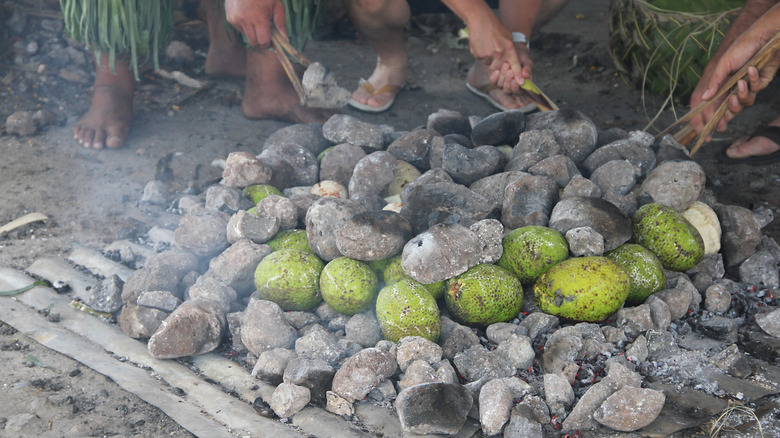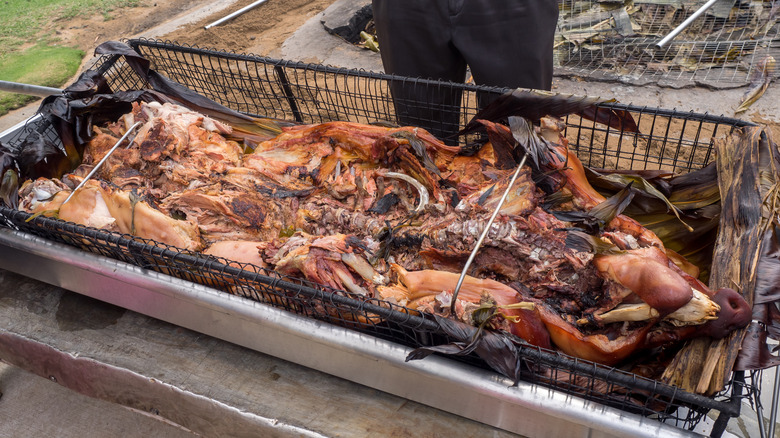What It Was Like For Early Humans To Cook With Earth Ovens
When human beings mastered fire, it instantly placed us well ahead of any other species. Taming such a destructive element gave our early ancestors a wealth of new powers — like heating the home, fending off predators, and of course, cooking. But how did ancient humans contain and manipulate fire? Fortunately for us, they left quite a bit of evidence.
Archeologists have unearthed primitive ovens around the world, with the oldest being found in Central European sites such as Pavlov VI in the modern-day Czech Republic, according to NBC. There, researchers discovered an underground barbecue pit dating back approximately 29,000 years. Even more intriguing were the bones found around the oven, suggesting that one of the last meals cooked in it was a wooly mammoth.
The ovens found at Pavlov VI and elsewhere in Central Europe consist of large pits dug into the ground and lined with stones, per Literary Pub. When it came time to cook a meal, hot coals were loaded into the oven to heat the stones. Meat was wrapped in leaves and placed on top of the ashes before the whole oven was covered with dirt and the meat roasted slowly over many hours, similar to the slow-cooking methods employed by modern barbecue pit-masters. Some archaeological sites, including Pavlov VI, also feature ancient boiling pots in close proximity to the oven, forming the core of a primitive kitchen.
To try the oldest form of cooking, visit a luau
We have come a long way from the days of mammoth-eating, and so has our cooking technology. However, you can still experience the techniques that were employed at sites like Pavlov VI. If you want to sample some earth-oven cooking today, the best place to go, believe it or not, is Hawaii (via Hawaii Luaus). At traditional luaus, it is customary to serve Kalua pork roasted in an underground oven called an imu.
Imus can be found at most luau events in Hawaii, such as the Paradise Cove luau on Oahu, where you can even learn to make your own imu barbecue pit. It is remarkably similar to the ovens of our ancient ancestors, but they line the oven with chopped banana trees, which generate steam during the cooking process. Pit-roasted food is a showstopper, but given the amount of time, effort, and land consumption required to make an earth oven (Paradise Cove suggests digging a pit half the size of a swimming pool), it's a good thing our forebears didn't stop there.

